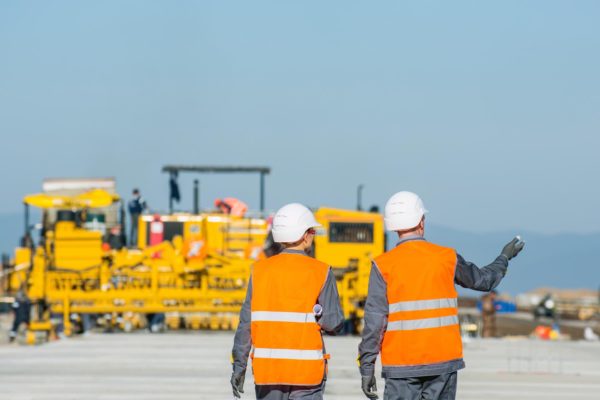The Advantages of Partnering with a Leading Consulting Engineer for Your Business Requirements
The Advantages of Partnering with a Leading Consulting Engineer for Your Business Requirements
Blog Article
The Interdisciplinary Approaches in the Geotechnical Industry: Linking the Void Between Engineering, Geology, and Environmental Science for Ideal Project Results
The assimilation of design, geology, and environmental science within the geotechnical industry is not merely helpful; it is vital for attaining optimal project results. What strategies might emerge to facilitate this important partnership and improve the effectiveness of geotechnical practices?
Relevance of Interdisciplinary Partnership
The importance of interdisciplinary partnership in the geotechnical sector can not be overstated. Effective geotechnical projects need the assimilation of diverse experience from different areas, including engineering, geology, and ecological scientific research. This collaboration makes sure that all facets of a task are considered, resulting in detailed remedies that resolve complex challenges.
Interdisciplinary partnership promotes technology by allowing experts to share insights and techniques that might not be obvious when operating in isolation (consulting engineer). By leveraging the staminas of multiple techniques, groups can recognize potential dangers, optimize design processes, and improve the sustainability of geotechnical projects. Such cooperation promotes a holistic understanding of site-specific conditions, which is vital for precise evaluation and decision-making.
The intricacy of geotechnical jobs demands a worked with method to analytical. Ultimately, interdisciplinary partnership is important for advancing finest techniques and achieving excellence in the geotechnical market.
Key Duties of Each Self-control
Cooperation amongst numerous disciplines is not just helpful; it is crucial for the successful execution of geotechnical jobs. Each self-control-- engineering, geology, and environmental scientific research-- plays a distinct yet interconnected role that adds to project efficiency and sustainability.
Geotechnical designers are largely responsible for creating structures and making certain architectural stability. They assess dirt and rock residential properties to evaluate load-bearing abilities, giving crucial information for secure construction practices. Their experience allows the solution of innovative options to complicated challenges.

Ecological scientists analyze the prospective influences of building and construction on environments and water sources. They carry out environmental analyses and create mitigation techniques to decrease damaging impacts. By incorporating environmental considerations, they guarantee compliance with laws and advertise sustainability throughout the task lifecycle.
Instance Researches of Successful Integration
Successful integration of geotechnical disciplines can be exemplified via various study that highlight the efficiency of team effort in resolving complex design obstacles. One notable example is the building and construction of the Hong Kong-- Zhuhai-- Macau Bridge, where a joint approach including geotechnical engineering, geology, and ecological science was crucial. Designers and geologists worked in unison to evaluate the seabed problems and optimize the structure layout, making certain stability and minimizing ecological impact.
Another impactful instance is the improvement of slope stability in the San Francisco Bay Location, where an interdisciplinary group combined geotechnical analysis with environmental evaluations. By incorporating hydrological studies and geological studies, the group properly determined possible landslide threats and applied reliable reduction actions, boosting this page security and sustainability.
Additionally, the redevelopment of Brownfield websites commonly requires a multidisciplinary technique. In one case in Chicago, collaboration among geotechnical engineers, environmental researchers, and city coordinators led to the successful removal of contaminated dirt, enabling for the secure makeover of the site right into a community park. These case researches highlight that interdisciplinary collaboration not just addresses technical obstacles but likewise cultivates cutting-edge options that profit both tasks and areas.
Difficulties in Multidisciplinary Projects

Furthermore, collaborating schedules and process among different groups can be problematic, especially when each self-control has one-of-a-kind project milestones and deliverables. This misalignment can result in hold-ups and increased expenses. The challenge of resource allotment also impends huge; making certain that specialized knowledge is offered at critical junctures requires cautious planning and foresight.
Finally, governing conformity positions another substantial challenge. Each discipline might encounter various governing frameworks, and lining up these requirements to meet task objectives can be complex and taxing. Attending to these challenges demands solid management and efficient communication strategies to cultivate cooperation and make certain that multidisciplinary groups work cohesively towards shared objectives.
Future Trends in Geotechnical Practices
As the geotechnical sector develops, arising trends are reshaping methods to attend to the challenges dealt with in multidisciplinary tasks - engineer of record. One considerable trend is the boosted integration of advanced innovations, such as expert system and machine understanding, right into geotechnical analysis and layout. These technologies boost anticipating modeling and risk assessment, enabling engineers to make Resources more informed decisions throughout the task lifecycle

Additionally, the fostering of electronic doubles and real-time surveillance systems is ending up being extra prevalent. These devices promote ongoing analysis of soil problems and architectural performance, browse around here enabling timely treatments when concerns emerge.
Verdict
In final thought, the assimilation of engineering, geology, and ecological scientific research is crucial for achieving ideal end results in the geotechnical industry. Effective instance studies illustrate the benefits of this method, while acknowledging the obstacles faced in multidisciplinary jobs.
The assimilation of engineering, geology, and ecological scientific research within the geotechnical sector is not merely beneficial; it is crucial for attaining optimal job results. Reliable geotechnical projects require the assimilation of varied proficiency from various fields, consisting of design, geology, and ecological scientific research.Browsing the intricacies of multidisciplinary projects in the geotechnical market offers numerous substantial obstacles.As the geotechnical industry advances, emerging fads are reshaping techniques to resolve the obstacles faced in multidisciplinary tasks. Geotechnical engineers are increasingly working together with environmental scientists to ensure that projects straighten with sustainability objectives and abide with governing needs.
Report this page